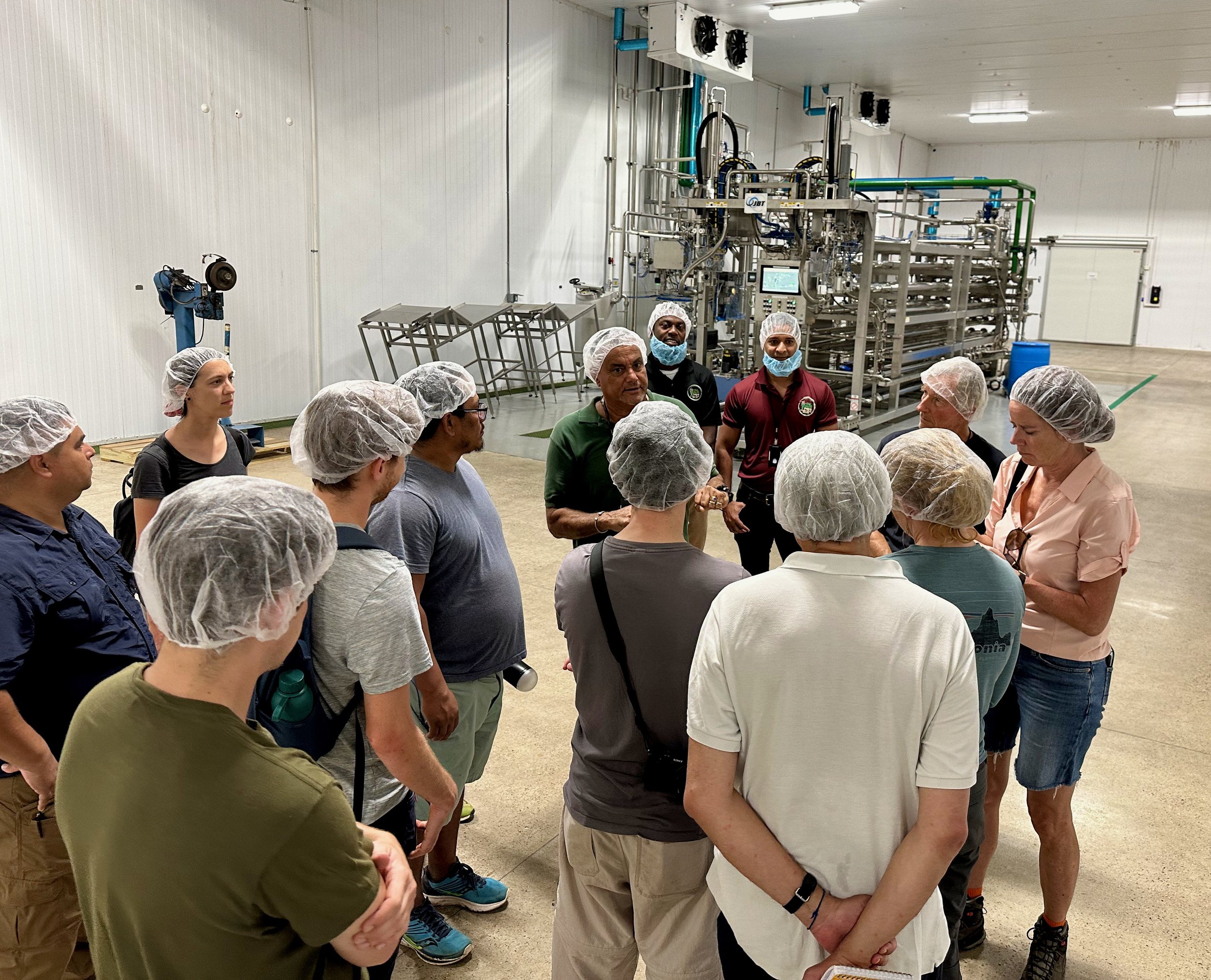
Silk Grass Farms Featured Among Those Leading Conservation in Belize
Eight of the world’s leading environmental journalists visited Belize during January 2024 and made Silk Grass Farms one of the focal points of their trip.
In his own story about the trip, TENT Conservation Manager Jacob Dykes cited Silk Grass founders Mandy Cabot and Peter Kjellerup as practicing “capitalism as if nature mattered.” He pointed out that Belize’s conservation initiatives have managed to protect millions of acres of contiguous virgin rainforest critical to sustaining biological diversity. The Silk Grass Wildlife Preserve, as an example, adjoins the Mayflower Bocawina National Park; Sittee River Forest Preserve and Cockscomb Basin Wildlife Sanctuary to constitute a contiguous protected area of more than 2 million acres.
Journalists on the trip who subsequently published stories in major news media about Belize included:
Rafaela Bredow in Der Spiegel (Germany, 17 million readers) describes the for-profit farming and food-processing company organized solely to benefit its employees, their communities and the Silk Grass Wildlife Preserve, quoting Mandy Cabot about Silk Grass Farms, “This is the mother of all impact investments.”
Ben Cooke in The Times of London (UK, 3.8 million readers) quotes Silk Grass Wildlife Preserve Board Member Elma Kay, “Conservationists are not against agriculture. We all have to eat. It’s where the agriculture is and what type of agriculture it is, that’s the nuance.”
Marc Cherki in Le Figaro (France, 19 million readers) focused on the protection and restoration of wildlife habitat in a country that is one of the last strongholds of biological diversity, home to more than 500 bird species, 150 mammals, 150 amphibians and reptiles, over 550 fish species and more than 5,000 distinct plants.
Nicholas Kusnetz of Inside Climate News (US, 100,000 readers) quotes Silk Grass Farms Executive Director Henry Canton, talking about the farm’s unique support of its adjacent wildlife preserve. “Farmers are ready for conservation.”
Hosted by The European Nature Trust (TENT) based in the United Kingdom, the writers came from France, Germany, the United States, the UK, and Switzerland to experience Belize firsthand. Although most of TENT’s work is focused on preserving nature in Europe, organizers said they chose to sponsor the weeklong trip to Central America because, “Belize is creating a blueprint as a conservation leader in the Global South, with critical learnings for the international community.”
The journalists spent a day at Silk Grass Farms touring the factory and fields, seeing how coconuts, cacao, citrus fruits and other crops are being grown sustainably, and in tune with nature. They also walked in the 24,500-acre Silk Grass Wildlife Preserve, which is supported by profits from the Silk Grass farms and factory.
Dykes, of TENT, points out that, “Some 61 percent of Belize remains forested and 43 percent (of those forests) are carbon-rich ‘primary forests’. For comparison, in the same region as Belize, Costa Rica —a nation internationally famed for its biodiversity and conservation ethos—has 46 percent forest cover. El Salvador has just 2 percent primary forest remaining, while Honduras has 13 percent.”
The journalists met a host of Belizean conservationists, farmers and indigenous leaders including entrepreneur Michael Bowen; the Audubon Society’s Amanda Acosta; farmer Steven Dyck; Lisa Carne of Fragments of Hope; Marisa Tellez of the Crocodile Research Coalition; Spanish Lookout Chairman Harry Letkeman; Rafael Manzanero of Friends for Conservation and Development; Jacob Marlin of BFREE; and Valdemar Andrade of the Turneffe Atoll Sustainability Association.
“By the end of the trip, a vision of hope for global biodiversity had formed,” Dykes wrote. “By visiting a network of protected areas, participating in conservation and learning first-hand from communities and NGOs, media guests left inspired to raise international awareness of the pivotal work Belize is carrying out on behalf of the planet.”



